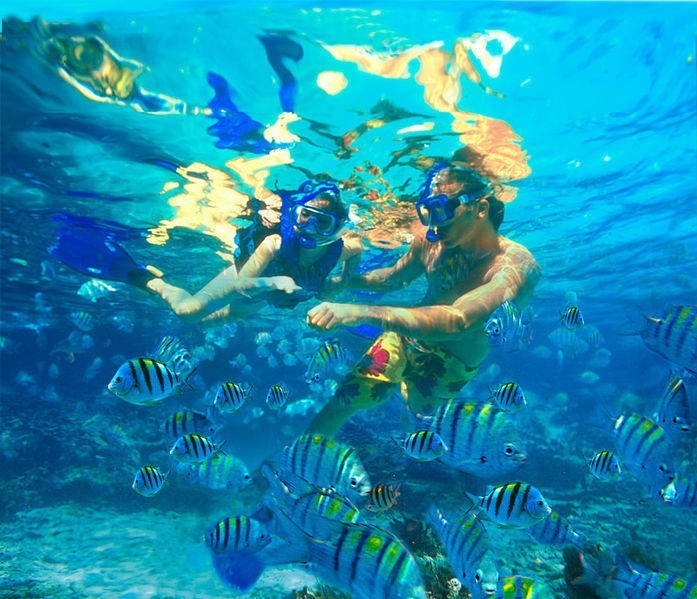Of all the strange creatures that inhabit our oceans, seahorses (Hippocampus ingens) are one of the most mysterious and unique. This tiny species is one of the few fish that swims upright, wrapping its curly tail around plants to help it fight the current. Furthermore, instead of […]
Category Archives: oceano ecuador
Coral reefs are among the world's most spectacular ecosystems, and snorkeling is a great way to explore them. As coral reefs face an increasingly uncertain future, snorkelers and other coral reef visitors can play a vital role in protecting these fragile ecosystems.
Current acidification could be worse than during the four largest mass extinctions in history, when a natural surge in carbon from asteroids and volcanic eruptions increased global temperatures, according to the Science study, led by British, American, and French experts. Anthropogenic (human-generated) CO2 emissions, in addition to […]
Marine energy can play a fundamental role in reducing CO2 emissions globally, so promoting and developing it is crucial to mitigating the effects of climate change. Currently, only offshore wind technology has managed to achieve this goal.
In countries such as Brazil and Argentina (pictured), research is being carried out for the sustainable development of mariculture. Photo: www.cgera.org.ar As part of the joint work carried out by the Ministry of Agriculture, Livestock, Aquaculture and Fisheries with the Economic Commission for Latin America and the Caribbean (ECLAC), which seeks to establish a "Strategy for the Sustainable Development of Mariculture in […]
Marine plants and animals need to move ever faster to adapt and seek more favorable thermal conditions. Information compiled by an international team with the participation of the Spanish National Research Council (CSIC) concludes that marine organisms are moving toward the poles at a rate of 72 kilometers per decade in response to […]
AQUACULTURE: Farming of animals and plants in farms or cages in water. This includes fish, reptiles, amphibians, crustaceans, mollusks, plants, and algae intended for food or any other use by humans (recreation, study, production of products). Many of these farms use large quantities of chemicals (antibiotics) to prevent […]
Whale and dolphin watching can be an inspiring and unforgettable experience. Organized whale and dolphin tours must be highly controlled and well-guided, always paying close attention to the well-being of these animals. The following information is a general guide and should be supplemented by local regulations. GENERAL INFORMATION ON WHAT IS ALLOWED AND PROHIBITED: Hold encounters […]
Like other marine species, birds can also be impacted by marine debris through entanglement, ingestion, and habitat disruption. Entanglement: Fishing gear in the sea or on beaches is one of the main causes of bird entanglement, which can even lead to […]
The thousands of people visiting beaches lead to an increase in waste. The most common type is plastic (bags, drink caps, wrappers). It's also the most deadly for marine wildlife. Some marine species (seagulls and turtles) ingest pieces of plastic that they mistake for food, which is dangerous because […]
- 1
- 2


